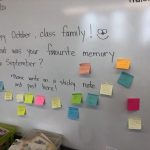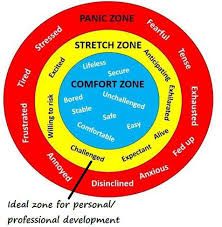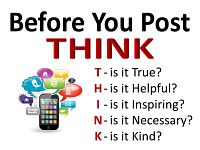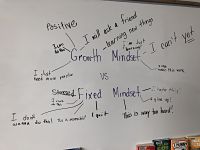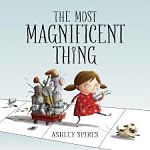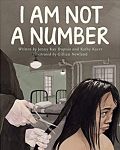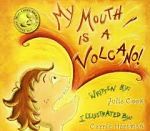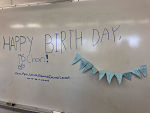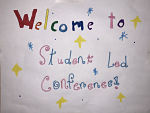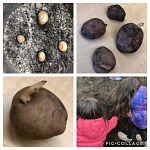Dear Parents,
Wow, what a fast two weeks! A lot has happened! Click here to watch the video update. No time to watch? Feel free to read our summary here.
This was two weeks ago but on Monday, September 21, we had a great turnout at our Meet Ms. Chan over Zoom. Thank you so very much for being there. I felt so blessed and honoured to meet so many of you! Then on September 23 and 24, we had the privilege to connect for our Meet the Teacher Conferences. Your sharing and insight are invaluable to us!
We continued to build our community and relationships through our Community Circle time. One day, we played Car & Driver. This activity helped us experience trust. Trust in each other. We talked about how trust is generally and generously given until there’s a reason to take it back. Our goal is to live our lives with integrity so that there is no reason for others not to trust you. This goes back to our three essential questions:
- Will you do the right thing?
- Will you do today’s best?
- What will you do for others today?
If we regularly ask ourselves these questions, and reflect on our mindset, language, and actions, then we will be well on our way to being positive role models and good citizens of the world! We have been using these questions after our tasks and reviewing them before beginning our new related tasks. We have seen improvements already!
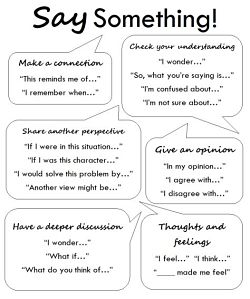 On October 1st during our Community Circle, we shared our September highlights. It was so heartwarming to hear that almost all of them shared how grateful they felt to be back in school with their friends, learning, and in our class! I so love how comfortable they feel to share!
On October 1st during our Community Circle, we shared our September highlights. It was so heartwarming to hear that almost all of them shared how grateful they felt to be back in school with their friends, learning, and in our class! I so love how comfortable they feel to share!
For Reading, we learned about the Say Something strategy. It is important for readers to have opportunities to talk about what they are reading in order to develop deeper understanding of text, characters, and meaning, for example. This is why we spend time practicing our “Say Something” strategy. Here, they practice their communication skills – speaking and listening, as they dive deeper into the book like what adults do during Book Club talks. They also will practice critical thinking skills as the year progresses. Many students continue to enjoy reading books on Epic. If you need more information, please reach out!
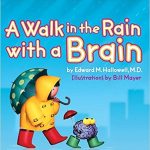
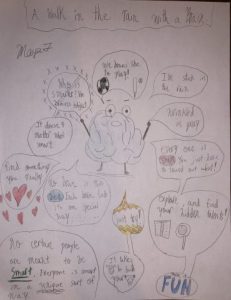
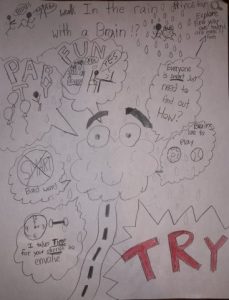 Last week, we read the story A Walk in the Rain with a Brain and tried our hand at sketchnoting, which has become very popular in the past few years in education. Here, students record key words and draw images that help them remember. It was my first time sketchnoting too! This story was about the importance of discovering how our brains are different and that everyone is “smart”. We need to spend time to figure out how we are “smart” and not compare ourselves to others.
Last week, we read the story A Walk in the Rain with a Brain and tried our hand at sketchnoting, which has become very popular in the past few years in education. Here, students record key words and draw images that help them remember. It was my first time sketchnoting too! This story was about the importance of discovering how our brains are different and that everyone is “smart”. We need to spend time to figure out how we are “smart” and not compare ourselves to others.
For Math, we have been doing Number Talks. Through doing these, we used our critical thinking skills to learn what digits are, what the commutative property is (2+3=5 and 3+2=5, 3×5=15 and 5×3=15), the all about digital roots! I have loved seeing critical thinking in action during these math times as we processed our new information! We will be moving into learning Place Value this week.
For Science, we started our Rock unit by recording what we think we know and what we wonder about rocks. For this inquiry-based unit, we will learn about and dive into what interests them most!
In the Computer Lab, students have learned a lot in a short time. In the last couple weeks, they learned how to write an email using proper etiquette, became familiar with Assignments in Teams, learned how to navigate their online Class Notebook (which looks like a binder with tabs), started their Digital Portfolios in PowerPoint, and started writing their stories. We finally have our Computer Lab times set. We have the lab booked on Tuesdays and Fridays.
Students had a chance to spend some time flushing out what their Passion Projects will be. They spent some time talking to different classmates about their ideas. The hope was that the more they talked about their plans, the more excited they would get! That’s how we can tell if we have found the right Passion Project for us!
Ms. Paulich did a cool art activity with them that shows what is Behind My Mask. They wrote words that described them.
Last week, we went on our Terry Fox Run in the neighbourhood. As a school, we decided to walk as a class to keep our cohorts safely together. We walked the route twice and everyone represented Gilmore well. It was such a beautiful day! I absolutely loved all of the social interactions I saw happening as we walked!
We also acknowledged Orange Shirt Day. In the past couple weeks, they learned about residential schools and the meaning behind this day with Mrs. Siu and Ms. Paulich.
We are looking forward to a fantastic October! Thank you for your continued support at home! As always, should you have any questions, please ask! We are here to support you and your child as we work as partners! We feel SO fortunate to be teaching your wonderful children. We have the best class family ever!!
Gratefully, Ms. Chan & Ms. Paulich
